
autolabel
Label, clean and enrich text datasets with LLMs.
Stars: 2034
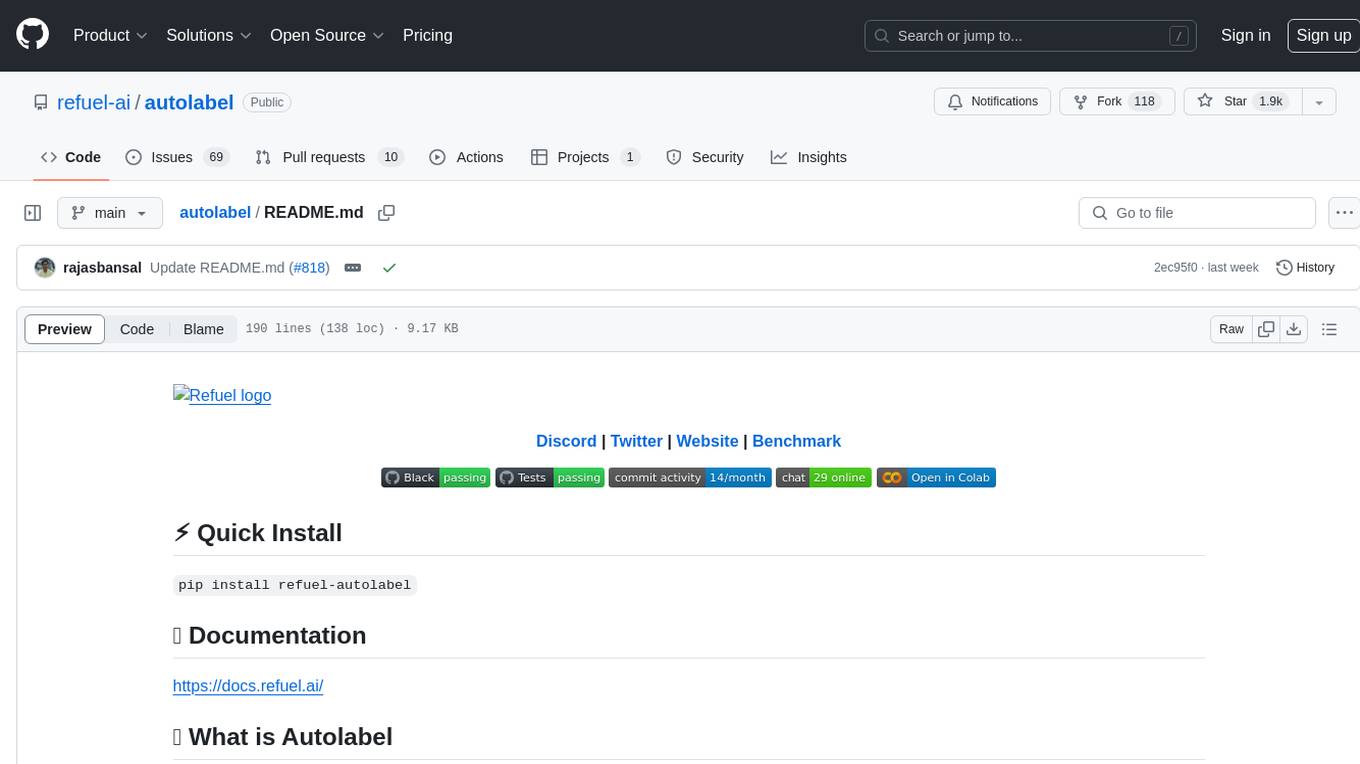
Autolabel is a Python library designed to label, clean, and enrich text datasets using Large Language Models (LLMs). It provides a simple 3-step process for labeling data, supports various NLP tasks, and offers features like confidence estimation, explanations, and state management. Users can access Refuel hosted LLMs for labeling and confidence estimation, and the library supports commercial and open source LLMs from providers like OpenAI, Anthropic, HuggingFace, and Google. Autolabel aims to streamline the labeling process for machine learning tasks by leveraging state-of-the-art LLM techniques and minimizing costs and experimentation time.
README:
pip install refuel-autolabel
Access to large, clean and diverse labeled datasets is a critical component for any machine learning effort to be successful. State-of-the-art LLMs like GPT-4 are able to automatically label data with high accuracy, and at a fraction of the cost and time compared to manual labeling.
Autolabel is a Python library to label, clean and enrich text datasets with any Large Language Models (LLM) of your choice.
Check out our technical report to learn more about the performance of RefuelLLM-v2 on our benchmark. You can replicate the benchmark yourself by following the steps below
cd autolabel/benchmark
curl https://autolabel-benchmarking.s3.us-west-2.amazonaws.com/data.zip -o data.zip
unzip data.zip
python benchmark.py --model $model --base_dir benchmark-results
python results.py --eval_dir benchmark-results
cat results.csvYou can benchmark the relevant model by replacing $model with the name of the model needed to be benchmarked. If it is an API hosted model like gpt-3.5-turbo, gpt-4-1106-preview, claude-3-opus-20240229, gemini-1.5-pro-preview-0409 or some other Autolabel supported model, just write the name of the model. If the model to be benchmarked is a vLLM supported model then pass the local path or the huggingface path corresponding to the model. This will run the benchmark along with the same prompts for all models.
The results.csv will contain a row with every model that was benchmarked as a row. Look at benchmark/results.csv for an example.
Autolabel provides a simple 3-step process for labeling data:
- Specify the labeling guidelines and LLM model to use in a JSON config.
- Dry-run to make sure the final prompt looks good.
- Kick off a labeling run for your dataset!
Let's imagine we are building an ML model to analyze sentiment analysis of movie review. We have a dataset of movie reviews that we'd like to get labeled first. For this case, here's what the example dataset and configs will look like:
{
"task_name": "MovieSentimentReview",
"task_type": "classification",
"model": {
"provider": "openai",
"name": "gpt-3.5-turbo"
},
"dataset": {
"label_column": "label",
"delimiter": ","
},
"prompt": {
"task_guidelines": "You are an expert at analyzing the sentiment of movie reviews. Your job is to classify the provided movie review into one of the following labels: {labels}",
"labels": [
"positive",
"negative",
"neutral"
],
"few_shot_examples": [
{
"example": "I got a fairly uninspired stupid film about how human industry is bad for nature.",
"label": "negative"
},
{
"example": "I loved this movie. I found it very heart warming to see Adam West, Burt Ward, Frank Gorshin, and Julie Newmar together again.",
"label": "positive"
},
{
"example": "This movie will be played next week at the Chinese theater.",
"label": "neutral"
}
],
"example_template": "Input: {example}\nOutput: {label}"
}
}Initialize the labeling agent and pass it the config:
from autolabel import LabelingAgent, AutolabelDataset
agent = LabelingAgent(config='config.json')Preview an example prompt that will be sent to the LLM:
ds = AutolabelDataset('dataset.csv', config = config)
agent.plan(ds)This prints:
━━━━━━━━━━━━━━━━━━━━━━━━━━━━━━━━━━━━━━━━ 100/100 0:00:00 0:00:00
┌──────────────────────────┬─────────┐
│ Total Estimated Cost │ $0.538 │
│ Number of Examples │ 200 │
│ Average cost per example │ 0.00269 │
└──────────────────────────┴─────────┘
─────────────────────────────────────────
Prompt Example:
You are an expert at analyzing the sentiment of movie reviews. Your job is to classify the provided movie review into one of the following labels: [positive, negative, neutral]
Some examples with their output answers are provided below:
Example: I got a fairly uninspired stupid film about how human industry is bad for nature.
Output:
negative
Example: I loved this movie. I found it very heart warming to see Adam West, Burt Ward, Frank Gorshin, and Julie Newmar together again.
Output:
positive
Example: This movie will be played next week at the Chinese theater.
Output:
neutral
Now I want you to label the following example:
Input: A rare exception to the rule that great literature makes disappointing films.
Output:
─────────────────────────────────────────────────────────────────────────────────────────
Finally, we can run the labeling on a subset or entirety of the dataset:
ds = agent.run(ds)The output dataframe contains the label column:
ds.df.head()
text ... MovieSentimentReview_llm_label
0 I was very excited about seeing this film, ant... ... negative
1 Serum is about a crazy doctor that finds a ser... ... negative
4 I loved this movie. I knew it would be chocked... ... positive
...- Label data for NLP tasks such as classification, question-answering and named entity-recognition, entity matching and more.
- Use commercial or open source LLMs from providers such as OpenAI, Anthropic, HuggingFace, Google and more.
- Support for research-proven LLM techniques to boost label quality, such as few-shot learning and chain-of-thought prompting.
- Confidence estimation and explanations out of the box for every single output label
- Caching and state management to minimize costs and experimentation time
Refuel provides access to hosted open source LLMs for labeling, and for estimating confidence This is helpful, because you can calibrate a confidence threshold for your labeling task, and then route less confident labels to humans, while you still get the benefits of auto-labeling for the confident examples.
In order to use Refuel hosted LLMs, you can request access here.
Check out our public roadmap to learn more about ongoing and planned improvements to the Autolabel library.
We are always looking for suggestions and contributions from the community. Join the discussion on Discord or open a Github issue to report bugs and request features.
Autolabel is a rapidly developing project. We welcome contributions in all forms - bug reports, pull requests and ideas for improving the library.
- Join the conversation on Discord
- Open an issue on Github for bugs and request features.
- Grab an open issue, and submit a pull request.
For Tasks:
Click tags to check more tools for each tasksFor Jobs:
Alternative AI tools for autolabel
Similar Open Source Tools

autolabel
Autolabel is a Python library designed to label, clean, and enrich text datasets using Large Language Models (LLMs). It provides a simple 3-step process for labeling data, supports various NLP tasks, and offers features like confidence estimation, explanations, and state management. Users can access Refuel hosted LLMs for labeling and confidence estimation, and the library supports commercial and open source LLMs from providers like OpenAI, Anthropic, HuggingFace, and Google. Autolabel aims to streamline the labeling process for machine learning tasks by leveraging state-of-the-art LLM techniques and minimizing costs and experimentation time.
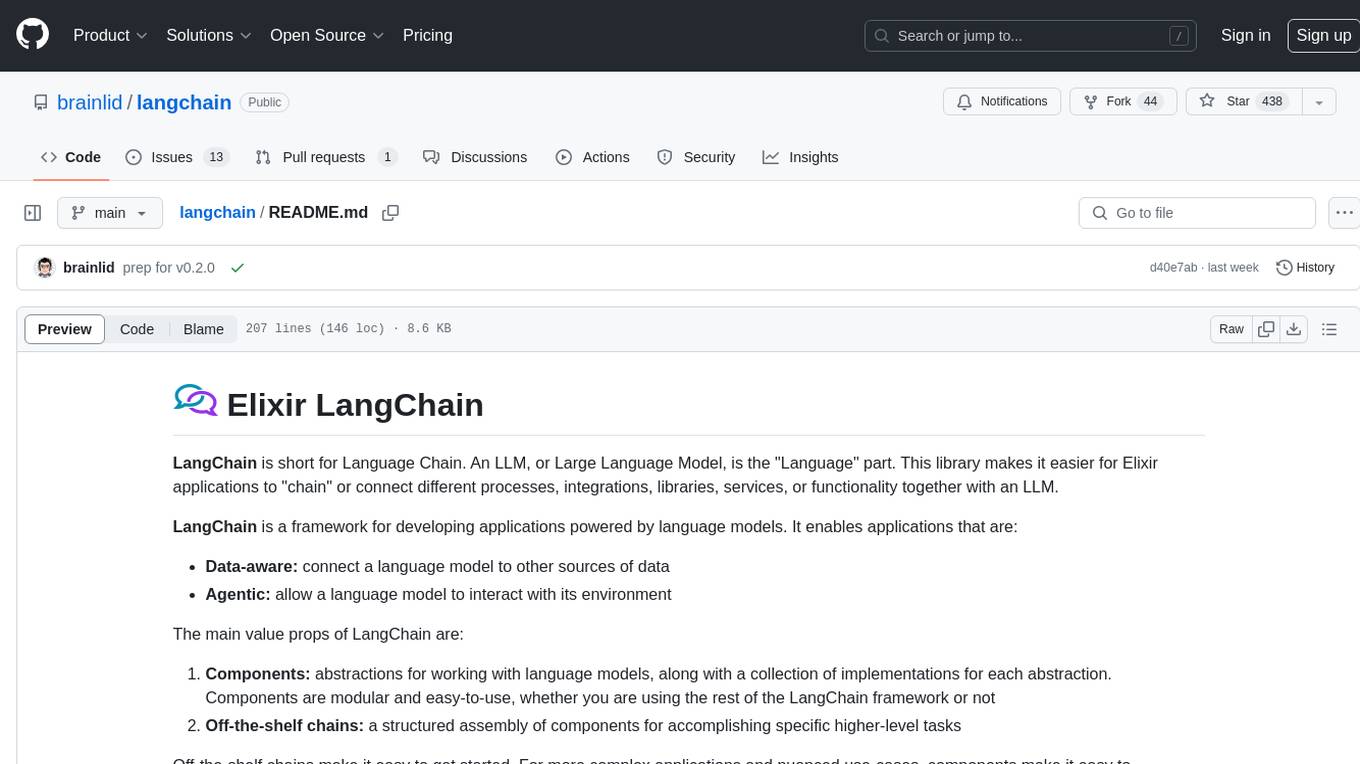
langchain
LangChain is a framework for developing Elixir applications powered by language models. It enables applications to connect language models to other data sources and interact with the environment. The library provides components for working with language models and off-the-shelf chains for specific tasks. It aims to assist in building applications that combine large language models with other sources of computation or knowledge. LangChain is written in Elixir and is not aimed for parity with the JavaScript and Python versions due to differences in programming paradigms and design choices. The library is designed to make it easy to integrate language models into applications and expose features, data, and functionality to the models.
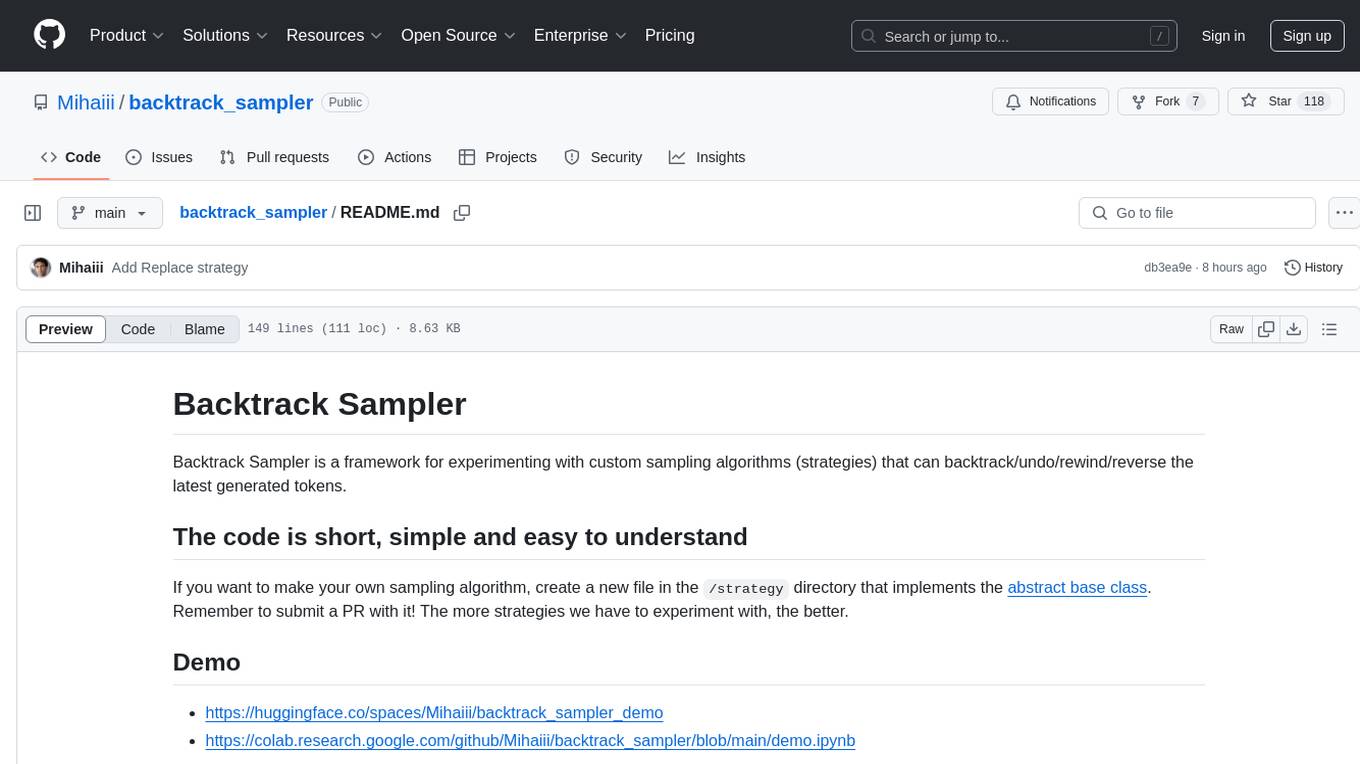
backtrack_sampler
Backtrack Sampler is a framework for experimenting with custom sampling algorithms that can backtrack the latest generated tokens. It provides a simple and easy-to-understand codebase for creating new sampling strategies. Users can implement their own strategies by creating new files in the `/strategy` directory. The repo includes examples for usage with llama.cpp and transformers, showcasing different strategies like Creative Writing, Anti-slop, Debug, Human Guidance, Adaptive Temperature, and Replace. The goal is to encourage experimentation and customization of backtracking algorithms for language models.
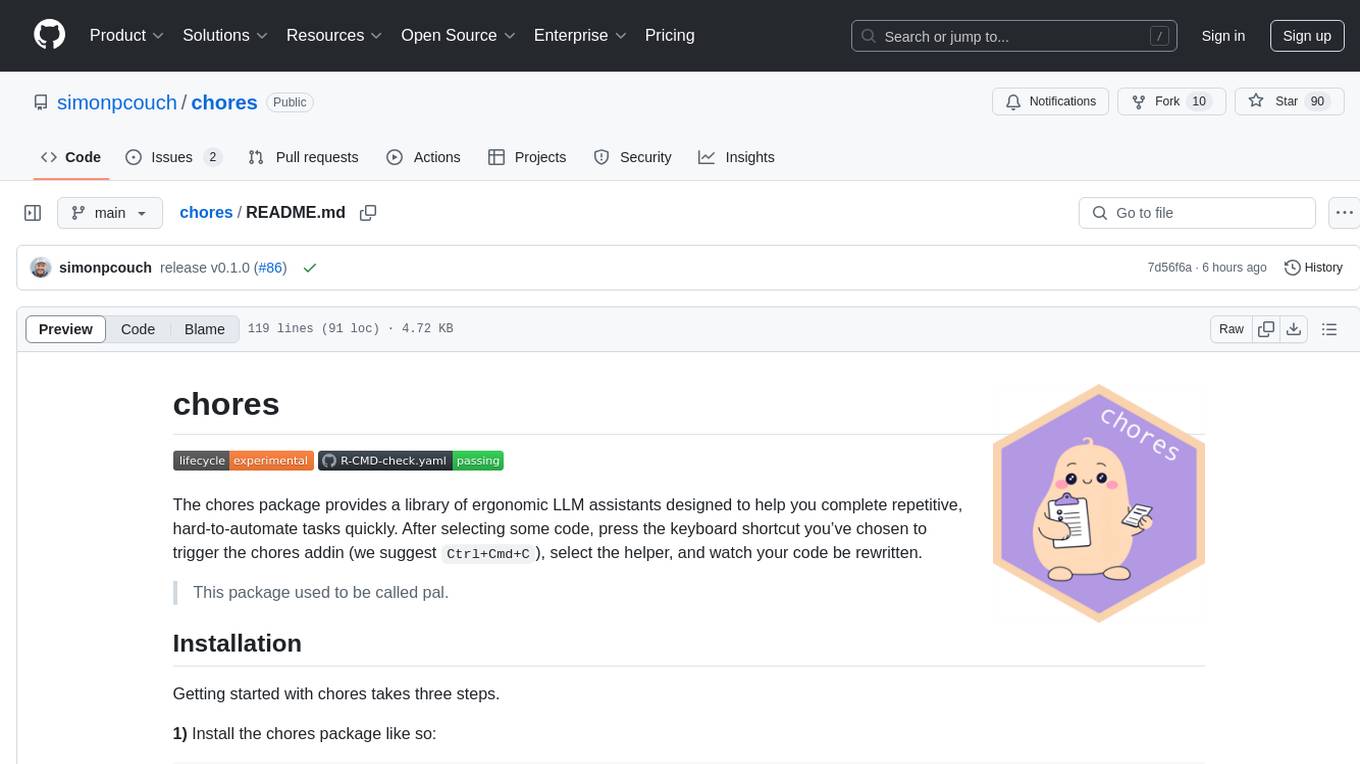
chores
The chores package provides a library of ergonomic LLM assistants designed to help users complete repetitive, hard-to-automate tasks quickly. Users can select code, trigger the chores addin, choose a helper, and watch their code be rewritten. The package offers chore helpers for tasks like converting to cli, testthat, and documenting functions with roxygen. Users can also create their own chore helpers by providing instructions in a markdown file. The cost of using helpers depends on the length of the prompt and the model chosen.
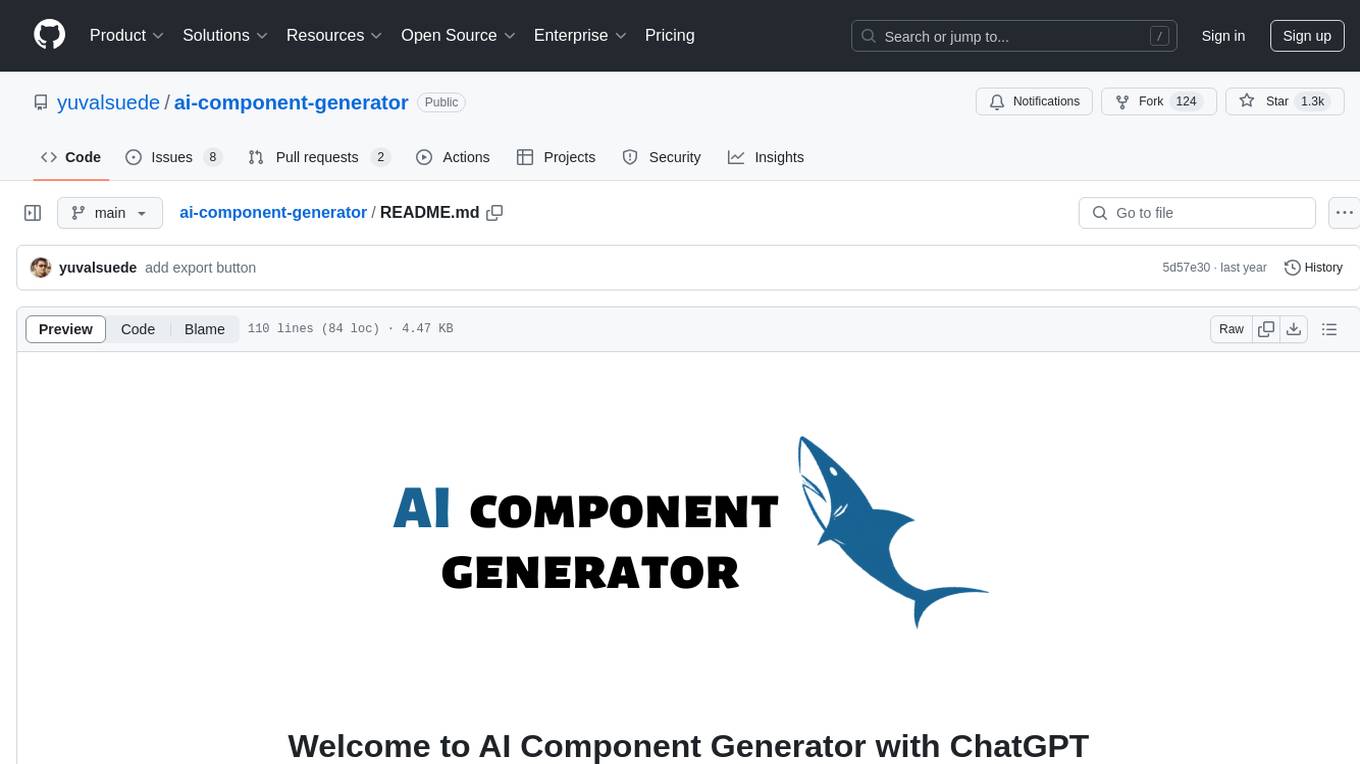
ai-component-generator
AI Component Generator with ChatGPT is a project that utilizes OpenAI's ChatGPT and Vercel Edge functions to generate various UI components based on user input. It allows users to export components in HTML format or choose combinations of Tailwind CSS, Next.js, React.js, or Material UI. The tool can be used to quickly bootstrap projects and create custom UI components. Users can run the project locally with Next.js and TailwindCSS, and customize ChatGPT prompts to generate specific components or code snippets. The project is open for contributions and aims to simplify the process of creating UI components with AI assistance.
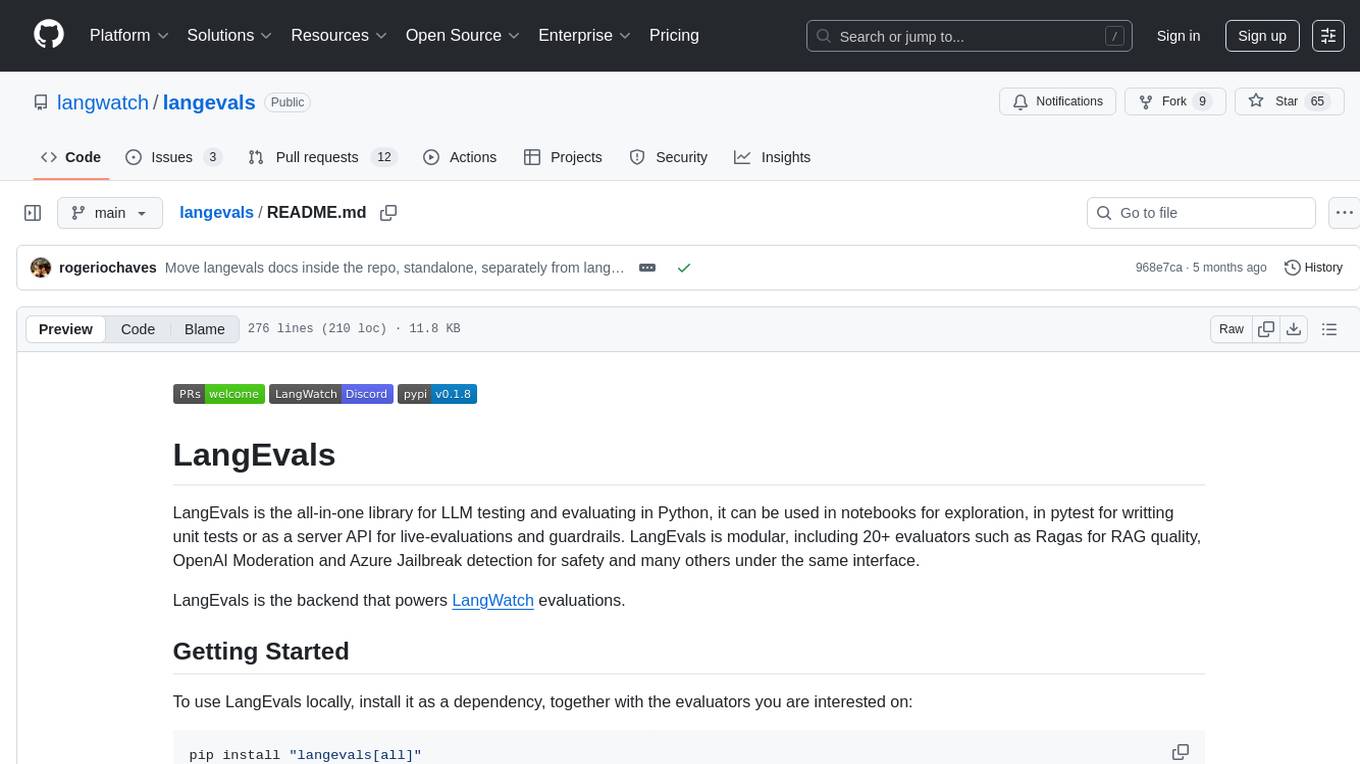
langevals
LangEvals is an all-in-one Python library for testing and evaluating LLM models. It can be used in notebooks for exploration, in pytest for writing unit tests, or as a server API for live evaluations and guardrails. The library is modular, with 20+ evaluators including Ragas for RAG quality, OpenAI Moderation, and Azure Jailbreak detection. LangEvals powers LangWatch evaluations and provides tools for batch evaluations on notebooks and unit test evaluations with PyTest. It also offers LangEvals evaluators for LLM-as-a-Judge scenarios and out-of-the-box evaluators for language detection and answer relevancy checks.
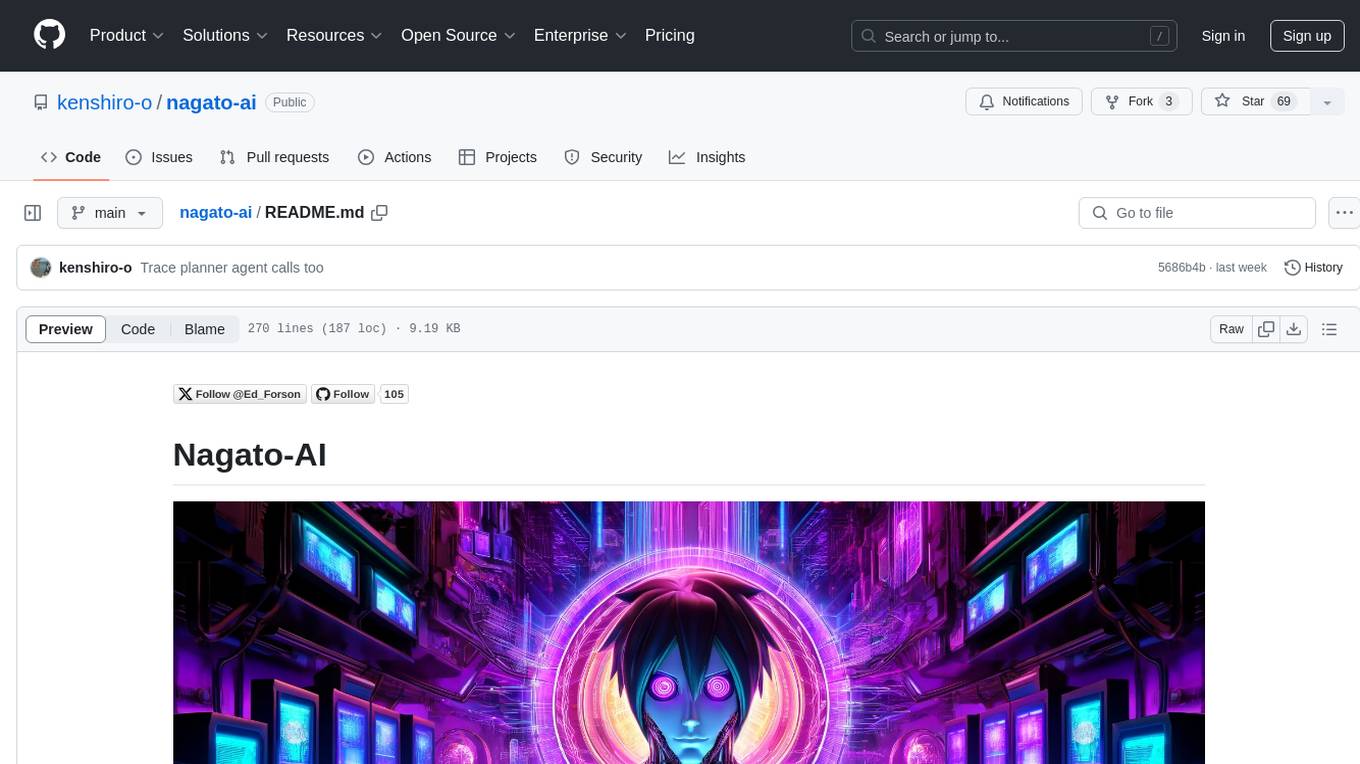
nagato-ai
Nagato-AI is an intuitive AI Agent library that supports multiple LLMs including OpenAI's GPT, Anthropic's Claude, Google's Gemini, and Groq LLMs. Users can create agents from these models and combine them to build an effective AI Agent system. The library is named after the powerful ninja Nagato from the anime Naruto, who can control multiple bodies with different abilities. Nagato-AI acts as a linchpin to summon and coordinate AI Agents for specific missions. It provides flexibility in programming and supports tools like Coordinator, Researcher, Critic agents, and HumanConfirmInputTool.
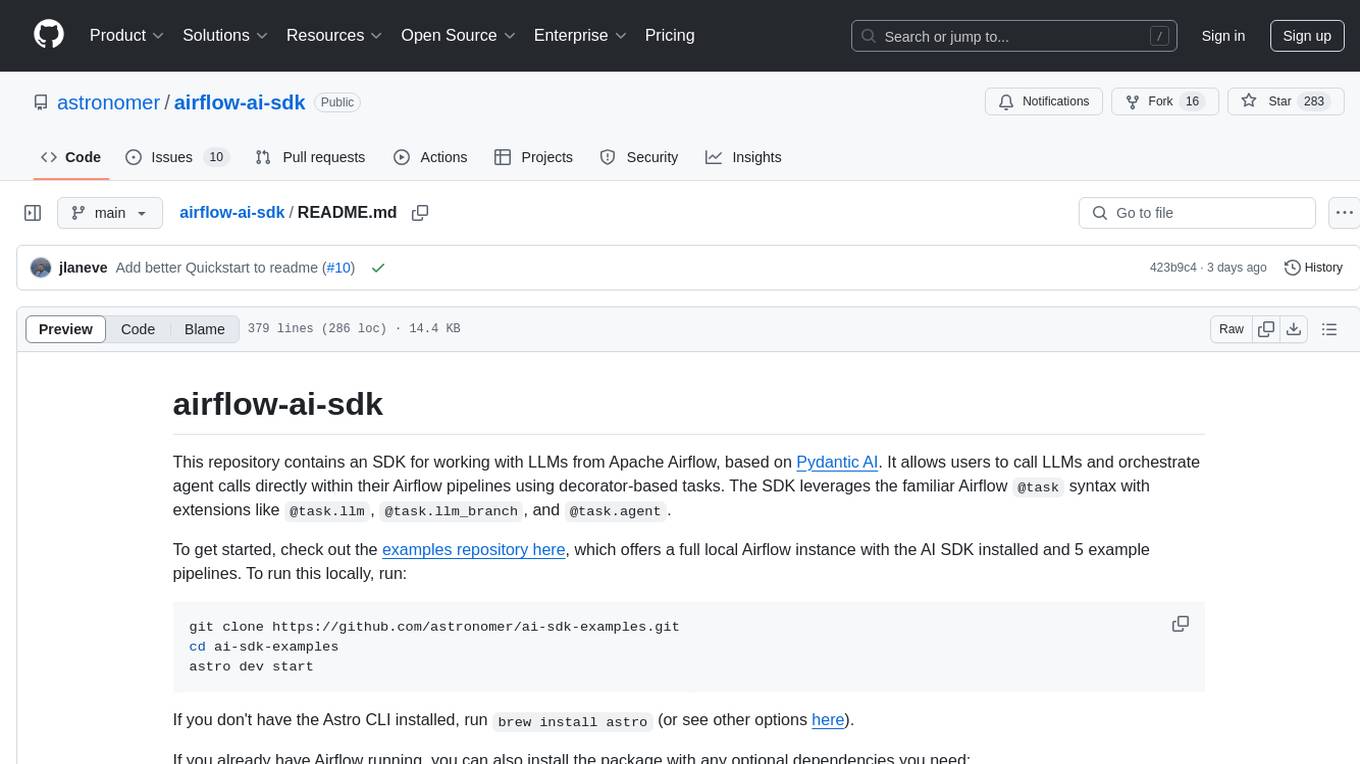
airflow-ai-sdk
This repository contains an SDK for working with LLMs from Apache Airflow, based on Pydantic AI. It allows users to call LLMs and orchestrate agent calls directly within their Airflow pipelines using decorator-based tasks. The SDK leverages the familiar Airflow `@task` syntax with extensions like `@task.llm`, `@task.llm_branch`, and `@task.agent`. Users can define tasks that call language models, orchestrate multi-step AI reasoning, change the control flow of a DAG based on LLM output, and support various models in the Pydantic AI library. The SDK is designed to integrate LLM workflows into Airflow pipelines, from simple LLM calls to complex agentic workflows.

rag-experiment-accelerator
The RAG Experiment Accelerator is a versatile tool that helps you conduct experiments and evaluations using Azure AI Search and RAG pattern. It offers a rich set of features, including experiment setup, integration with Azure AI Search, Azure Machine Learning, MLFlow, and Azure OpenAI, multiple document chunking strategies, query generation, multiple search types, sub-querying, re-ranking, metrics and evaluation, report generation, and multi-lingual support. The tool is designed to make it easier and faster to run experiments and evaluations of search queries and quality of response from OpenAI, and is useful for researchers, data scientists, and developers who want to test the performance of different search and OpenAI related hyperparameters, compare the effectiveness of various search strategies, fine-tune and optimize parameters, find the best combination of hyperparameters, and generate detailed reports and visualizations from experiment results.
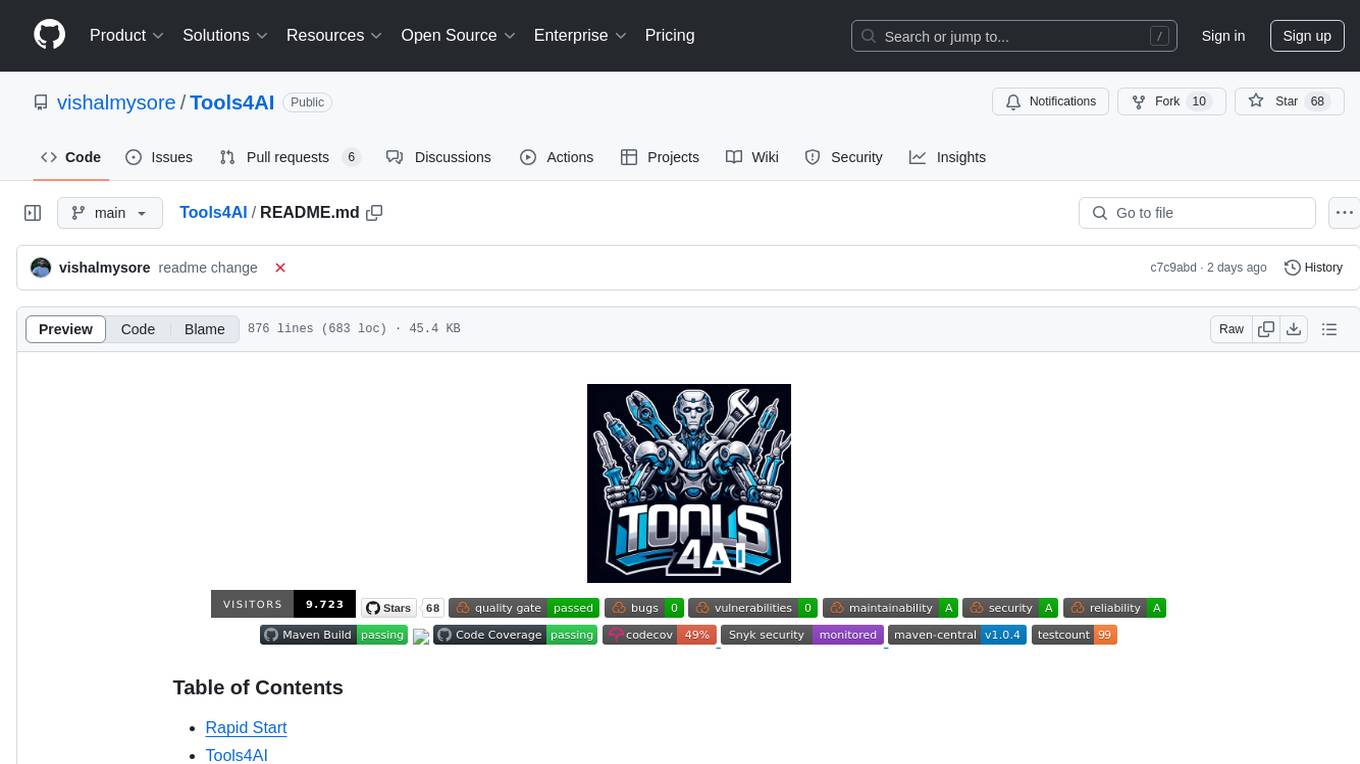
Tools4AI
Tools4AI is a Java-based Agentic Framework for building AI agents to integrate with enterprise Java applications. It enables the conversion of natural language prompts into actionable behaviors, streamlining user interactions with complex systems. By leveraging AI capabilities, it enhances productivity and innovation across diverse applications. The framework allows for seamless integration of AI with various systems, such as customer service applications, to interpret user requests, trigger actions, and streamline workflows. Prompt prediction anticipates user actions based on input prompts, enhancing user experience by proactively suggesting relevant actions or services based on context.
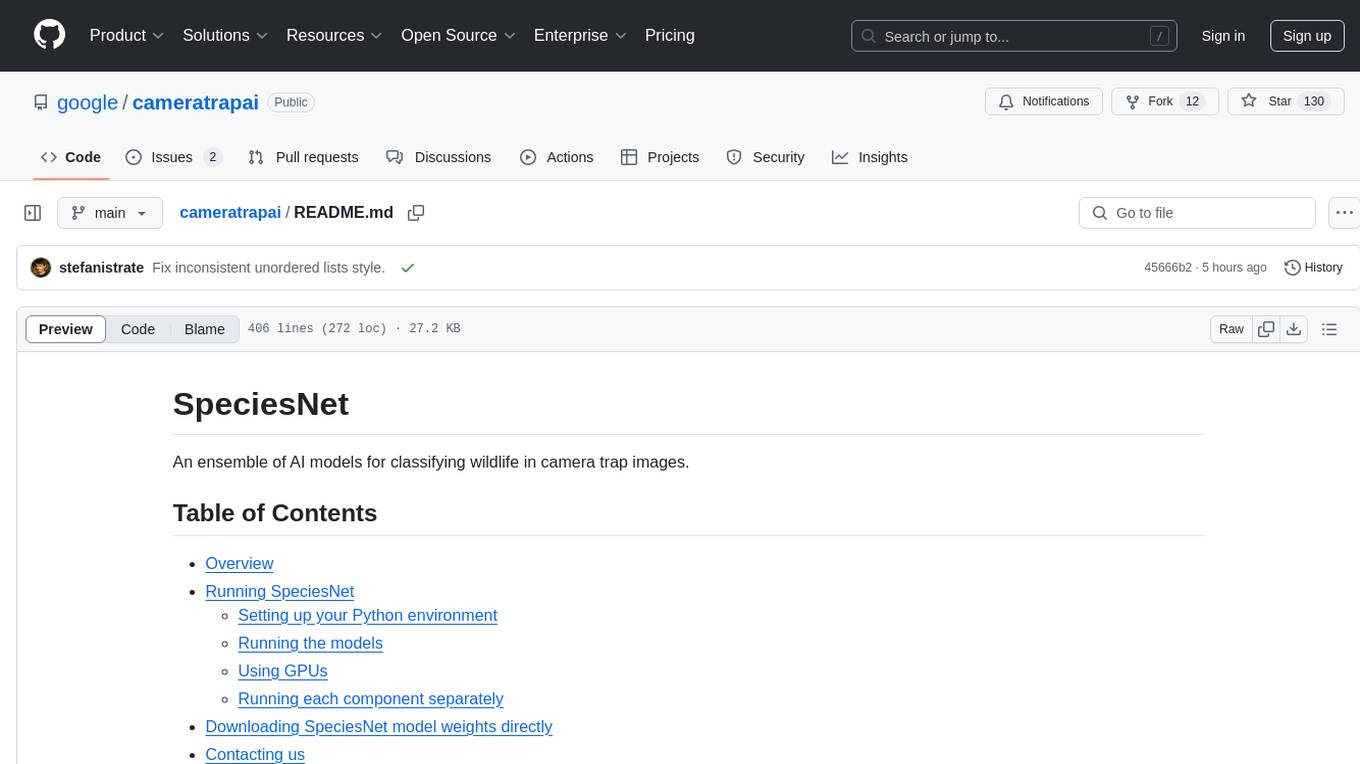
cameratrapai
SpeciesNet is an ensemble of AI models designed for classifying wildlife in camera trap images. It consists of an object detector that finds objects of interest in wildlife camera images and an image classifier that classifies those objects to the species level. The ensemble combines these two models using heuristics and geographic information to assign each image to a single category. The models have been trained on a large dataset of camera trap images and are used for species recognition in the Wildlife Insights platform.
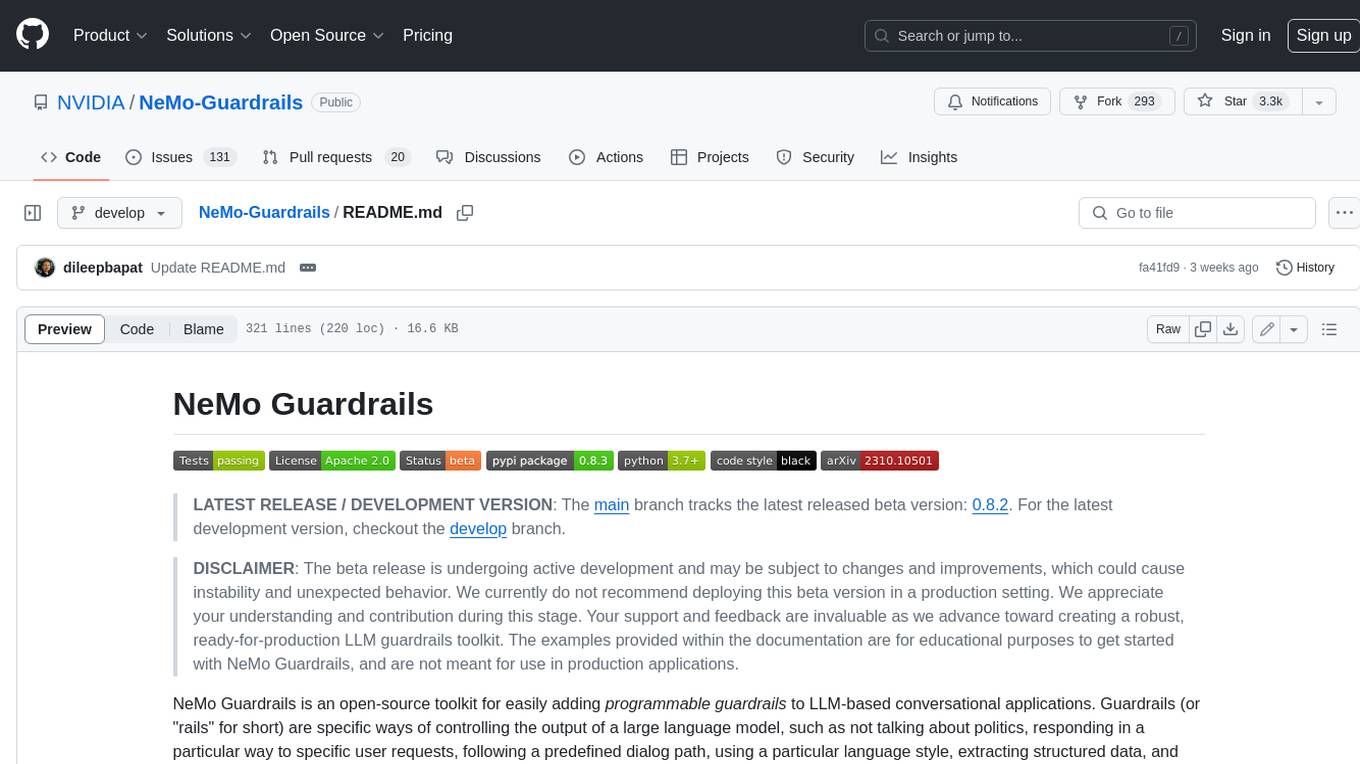
Guardrails
Guardrails is a security tool designed to help developers identify and fix security vulnerabilities in their code. It provides automated scanning and analysis of code repositories to detect potential security issues, such as sensitive data exposure, injection attacks, and insecure configurations. By integrating Guardrails into the development workflow, teams can proactively address security concerns and reduce the risk of security breaches. The tool offers detailed reports and actionable recommendations to guide developers in remediation efforts, ultimately improving the overall security posture of the codebase. Guardrails supports multiple programming languages and frameworks, making it versatile and adaptable to different development environments. With its user-friendly interface and seamless integration with popular version control systems, Guardrails empowers developers to prioritize security without compromising productivity.
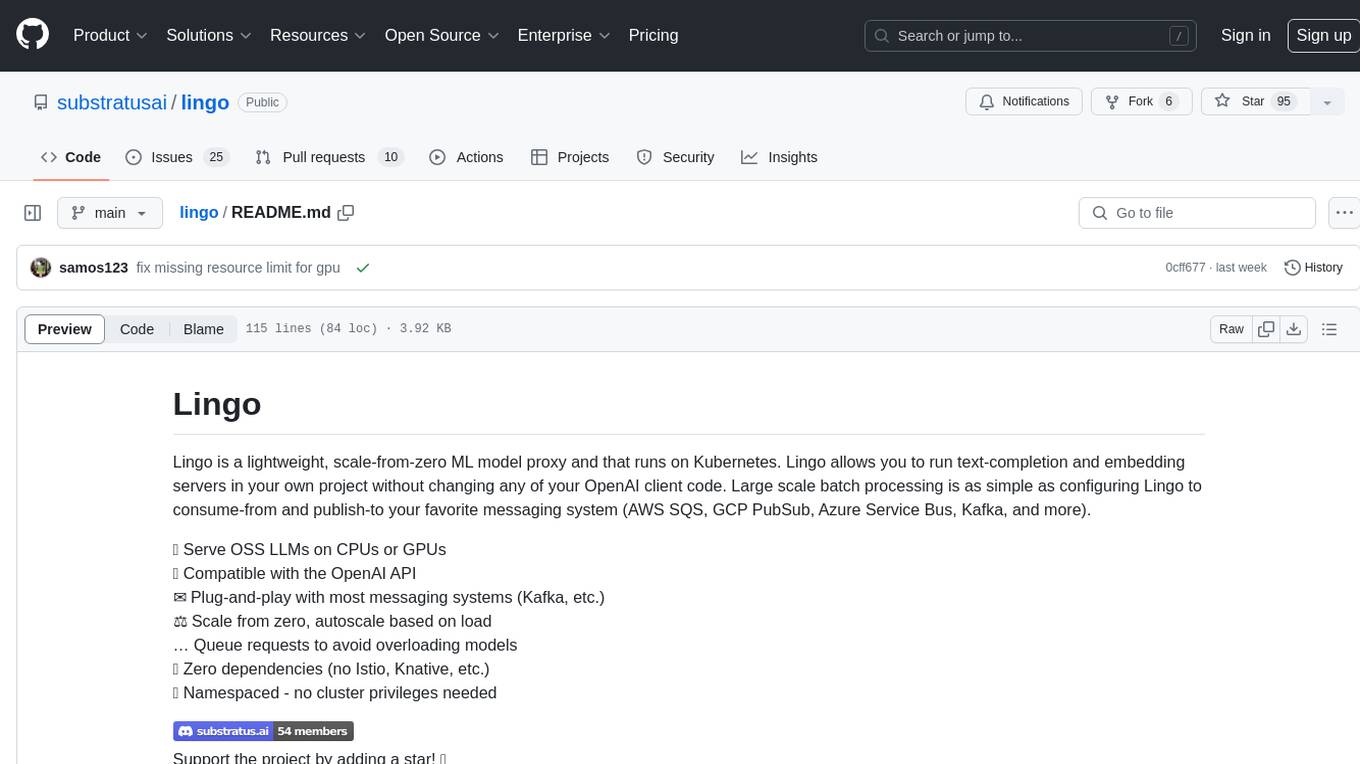
lingo
Lingo is a lightweight ML model proxy that runs on Kubernetes, allowing you to run text-completion and embedding servers without changing OpenAI client code. It supports serving OSS LLMs, is compatible with OpenAI API, plug-and-play with messaging systems, scales from zero based on load, and has zero dependencies. Namespaced with no cluster privileges needed.
talking-avatar-with-ai
The 'talking-avatar-with-ai' project is a digital human system that utilizes OpenAI's GPT-3 for generating responses, Whisper for audio transcription, Eleven Labs for voice generation, and Rhubarb Lip Sync for lip synchronization. The system allows users to interact with a digital avatar that responds with text, facial expressions, and animations, creating a realistic conversational experience. The project includes setup for environment variables, chat prompt templates, chat model configuration, and structured output parsing to enhance the interaction with the digital human.
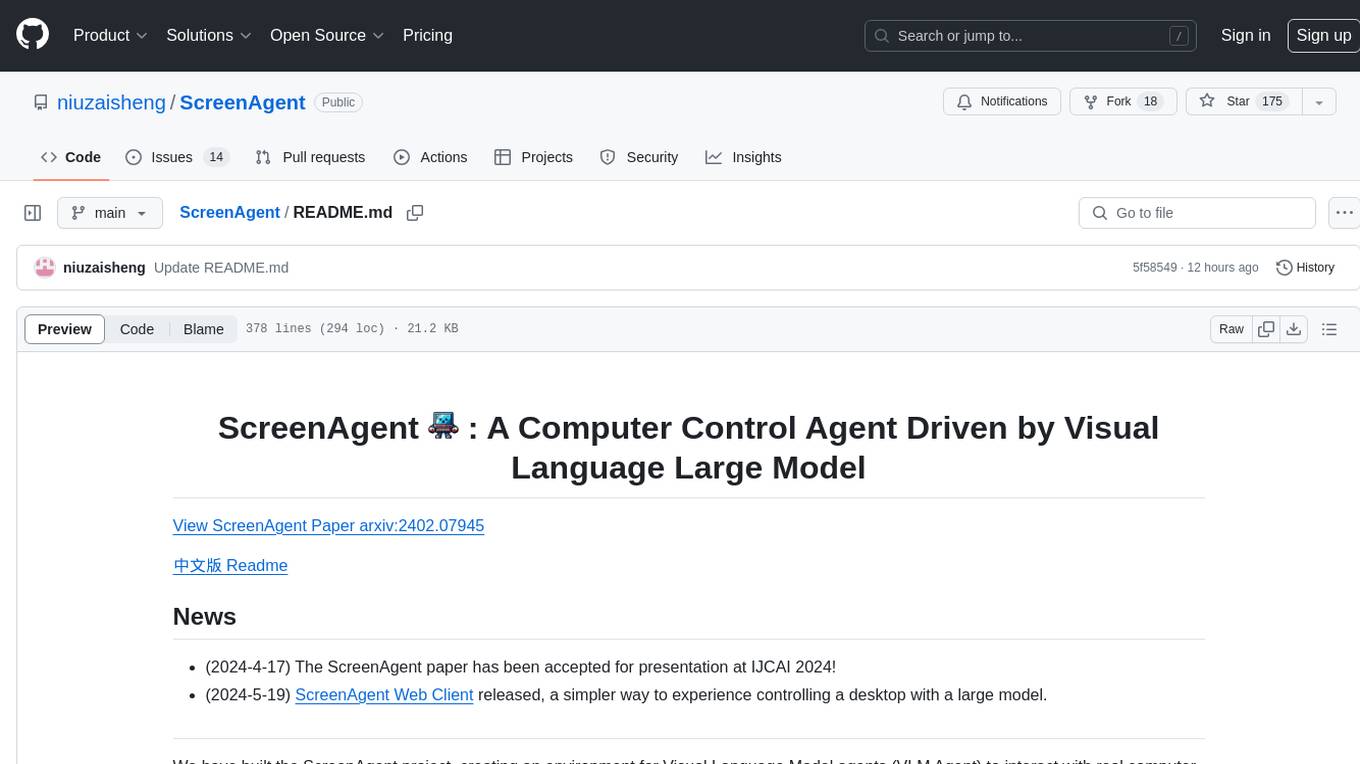
ScreenAgent
ScreenAgent is a project focused on creating an environment for Visual Language Model agents (VLM Agent) to interact with real computer screens. The project includes designing an automatic control process for agents to interact with the environment and complete multi-step tasks. It also involves building the ScreenAgent dataset, which collects screenshots and action sequences for various daily computer tasks. The project provides a controller client code, configuration files, and model training code to enable users to control a desktop with a large model.
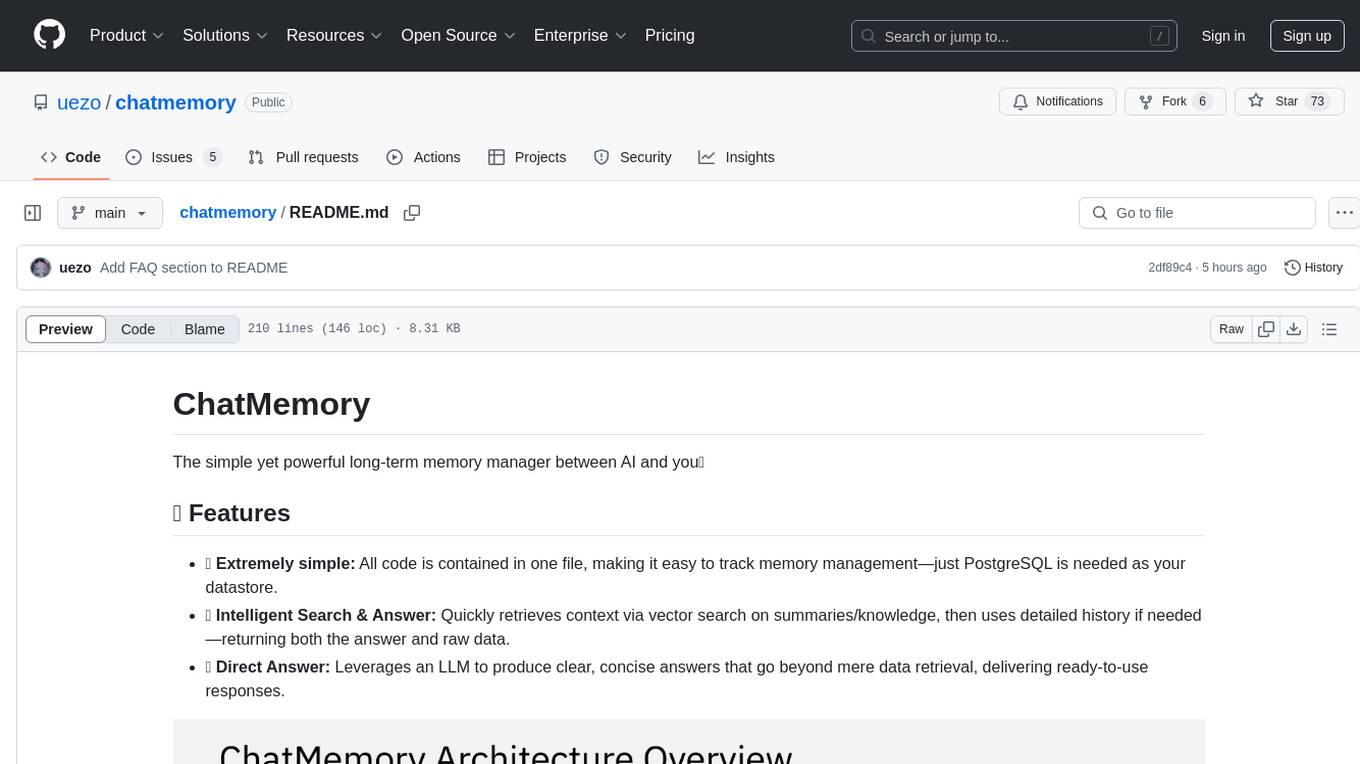
chatmemory
ChatMemory is a simple yet powerful long-term memory manager that facilitates communication between AI and users. It organizes conversation data into history, summary, and knowledge entities, enabling quick retrieval of context and generation of clear, concise answers. The tool leverages vector search on summaries/knowledge and detailed history to provide accurate responses. It balances speed and accuracy by using lightweight retrieval and fallback detailed search mechanisms, ensuring efficient memory management and response generation beyond mere data retrieval.
For similar tasks

autolabel
Autolabel is a Python library designed to label, clean, and enrich text datasets using Large Language Models (LLMs). It provides a simple 3-step process for labeling data, supports various NLP tasks, and offers features like confidence estimation, explanations, and state management. Users can access Refuel hosted LLMs for labeling and confidence estimation, and the library supports commercial and open source LLMs from providers like OpenAI, Anthropic, HuggingFace, and Google. Autolabel aims to streamline the labeling process for machine learning tasks by leveraging state-of-the-art LLM techniques and minimizing costs and experimentation time.
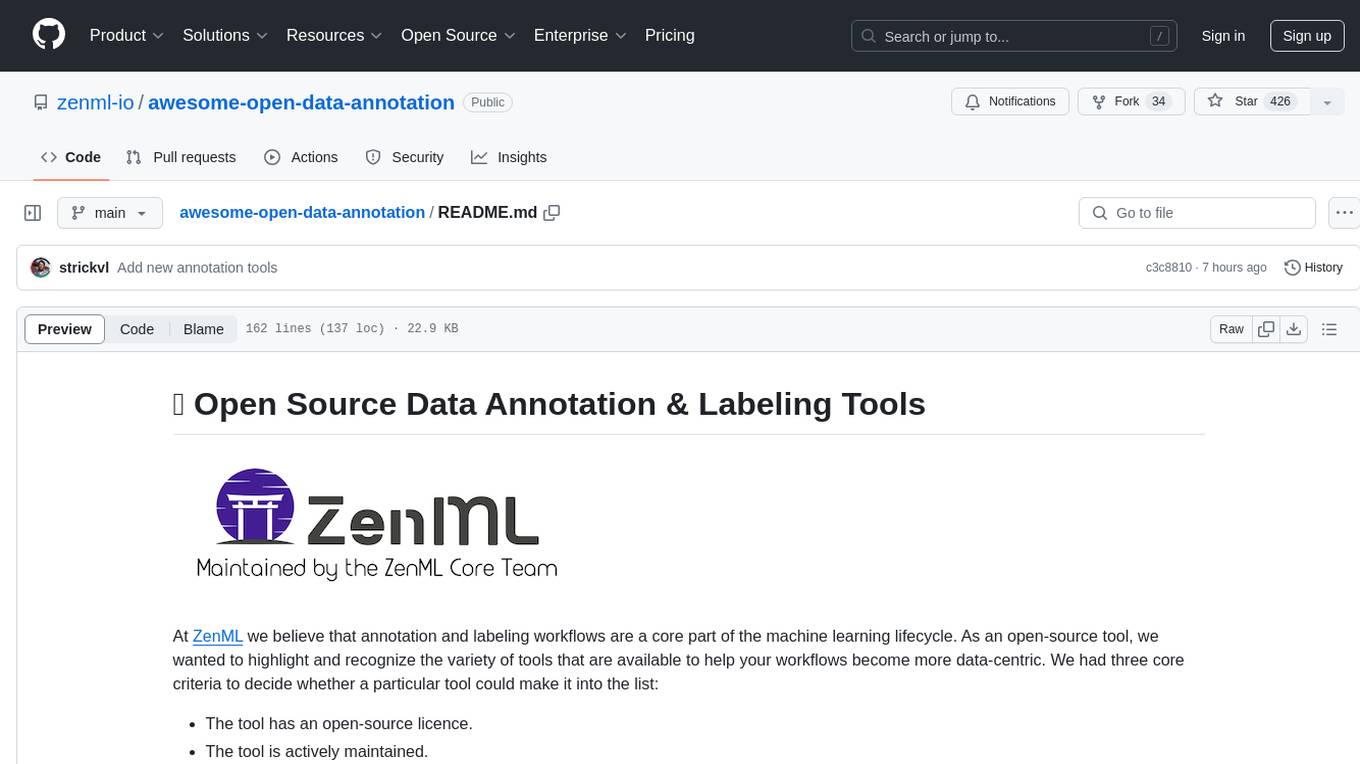
awesome-open-data-annotation
At ZenML, we believe in the importance of annotation and labeling workflows in the machine learning lifecycle. This repository showcases a curated list of open-source data annotation and labeling tools that are actively maintained and fit for purpose. The tools cover various domains such as multi-modal, text, images, audio, video, time series, and other data types. Users can contribute to the list and discover tools for tasks like named entity recognition, data annotation for machine learning, image and video annotation, text classification, sequence labeling, object detection, and more. The repository aims to help users enhance their data-centric workflows by leveraging these tools.
For similar jobs

weave
Weave is a toolkit for developing Generative AI applications, built by Weights & Biases. With Weave, you can log and debug language model inputs, outputs, and traces; build rigorous, apples-to-apples evaluations for language model use cases; and organize all the information generated across the LLM workflow, from experimentation to evaluations to production. Weave aims to bring rigor, best-practices, and composability to the inherently experimental process of developing Generative AI software, without introducing cognitive overhead.

LLMStack
LLMStack is a no-code platform for building generative AI agents, workflows, and chatbots. It allows users to connect their own data, internal tools, and GPT-powered models without any coding experience. LLMStack can be deployed to the cloud or on-premise and can be accessed via HTTP API or triggered from Slack or Discord.

VisionCraft
The VisionCraft API is a free API for using over 100 different AI models. From images to sound.

kaito
Kaito is an operator that automates the AI/ML inference model deployment in a Kubernetes cluster. It manages large model files using container images, avoids tuning deployment parameters to fit GPU hardware by providing preset configurations, auto-provisions GPU nodes based on model requirements, and hosts large model images in the public Microsoft Container Registry (MCR) if the license allows. Using Kaito, the workflow of onboarding large AI inference models in Kubernetes is largely simplified.

PyRIT
PyRIT is an open access automation framework designed to empower security professionals and ML engineers to red team foundation models and their applications. It automates AI Red Teaming tasks to allow operators to focus on more complicated and time-consuming tasks and can also identify security harms such as misuse (e.g., malware generation, jailbreaking), and privacy harms (e.g., identity theft). The goal is to allow researchers to have a baseline of how well their model and entire inference pipeline is doing against different harm categories and to be able to compare that baseline to future iterations of their model. This allows them to have empirical data on how well their model is doing today, and detect any degradation of performance based on future improvements.

tabby
Tabby is a self-hosted AI coding assistant, offering an open-source and on-premises alternative to GitHub Copilot. It boasts several key features: * Self-contained, with no need for a DBMS or cloud service. * OpenAPI interface, easy to integrate with existing infrastructure (e.g Cloud IDE). * Supports consumer-grade GPUs.

spear
SPEAR (Simulator for Photorealistic Embodied AI Research) is a powerful tool for training embodied agents. It features 300 unique virtual indoor environments with 2,566 unique rooms and 17,234 unique objects that can be manipulated individually. Each environment is designed by a professional artist and features detailed geometry, photorealistic materials, and a unique floor plan and object layout. SPEAR is implemented as Unreal Engine assets and provides an OpenAI Gym interface for interacting with the environments via Python.

Magick
Magick is a groundbreaking visual AIDE (Artificial Intelligence Development Environment) for no-code data pipelines and multimodal agents. Magick can connect to other services and comes with nodes and templates well-suited for intelligent agents, chatbots, complex reasoning systems and realistic characters.


